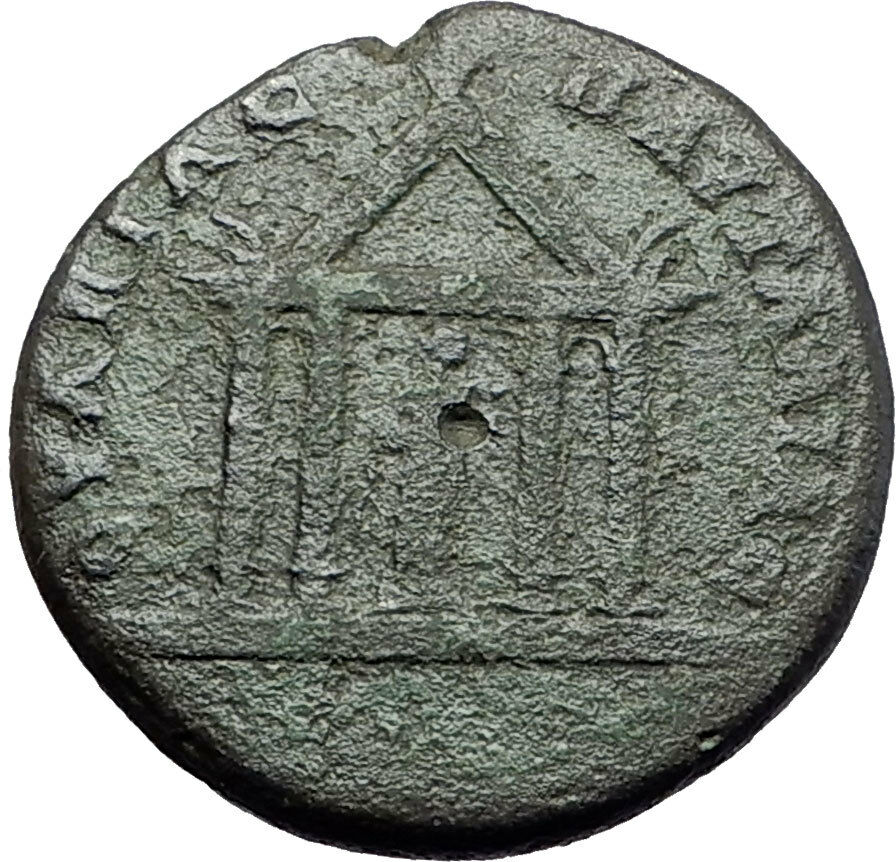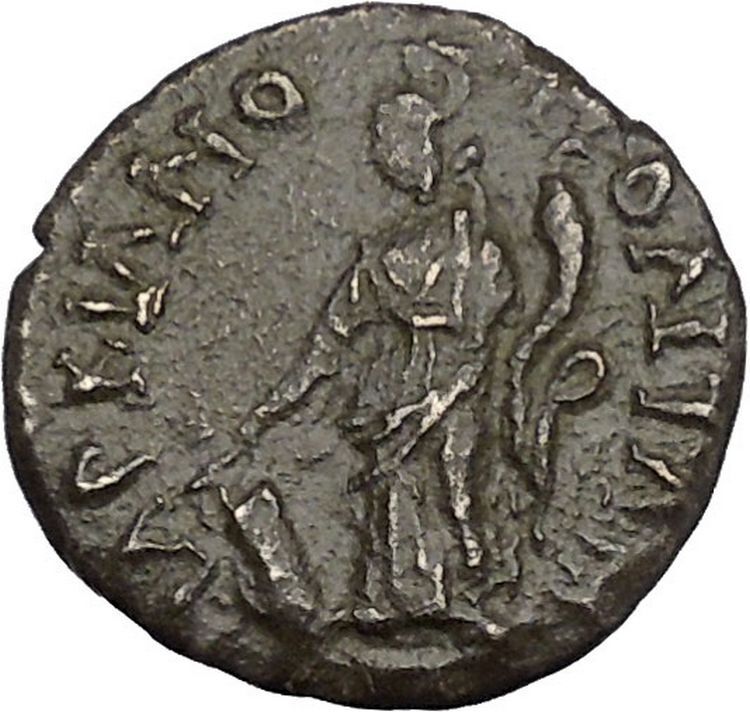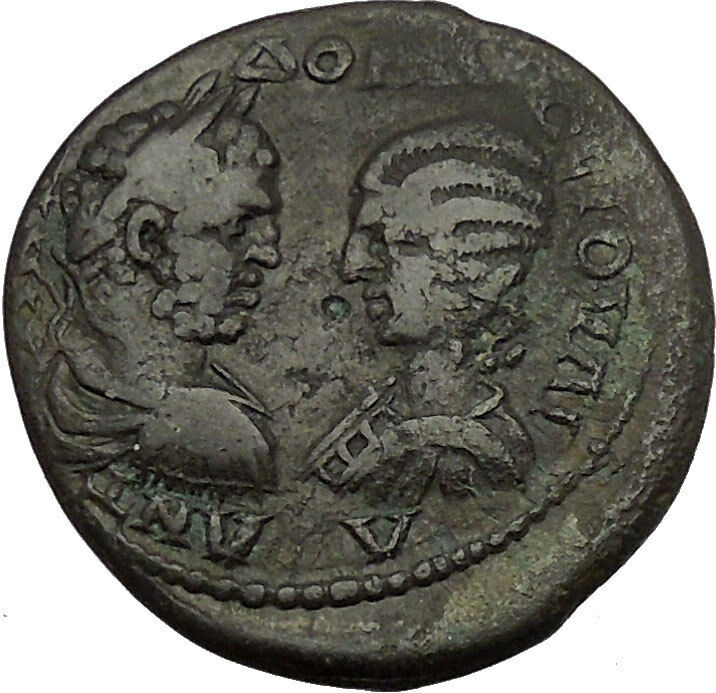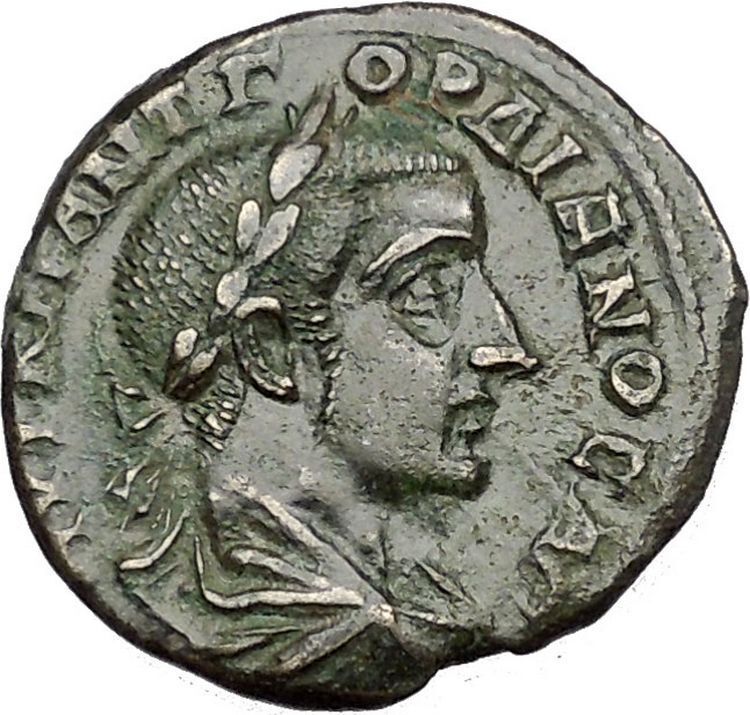|
Volusian – Roman Caesar: 251-253 A.D.
Bronze 24mm (4.57 grams) of Alexandria Troas in Troas
Certification: NGC Ancients XF 4681182-021
IMP C VIBIA FINIOLVSSSIANV, Laureate, draped and cuirassed bust right.
COL AVG TROA, Horse grazing right.
You are bidding on the exact item pictured, provided with a Certificate of Authenticity and Lifetime Guarantee of Authenticity.
Alexandria Troas (“Alexandria of the Troad“, mod. Eski Stambul) is an ancient Greek city situated on the Aegean Sea near the northern tip of Turkey’s western coast, a little south of Tenedos (modern Bozcaada). It is located in the modern Turkish province of Çanakkale.
According to the Catholic Encyclopedia, this site was first called Sigia; perhaps about 310 BC Antigonus refounded the city as Antigonia Troas. In its early years, Troas was a port city that supplied the Dorians with resources and trade. The city was conquered by the Helladic people and was nearly destroyed. It was rebuilt early in the next century and the name was changed by Lysimachus to Alexandria Troas, in memory of Alexander III of Macedon (Pliny, N.H. 5.124 merely states that the name changed from Antigonia to Alexandria). As the chief port of north-west Asia Minor, the place prospered greatly in Roman times, and the existing remains sufficiently attest its former importance. Strabo mentions that a Roman colony was created at the location in the reign of Augustus, named Colonia Alexandria Augusta Troas (called simply Troas during this period). Augustus, Hadrian and the rich grammarian Herodes Atticus contributed greatly to its embellishment; the aqueduct still preserved is due to the latter. Constantine considered making Troas the capital of the Roman Empire.
In Roman times, it was a significant port for travelling between Anatolia and Europe. Paul of Tarsus sailed for Europe for the first time from Alexandria Troas (Acts, 16:8-11) and returned there from Europe (and there occurred later the episode of the raising of Eutychus (Acts 20:5-12). Ignatius of Antioch also paused at this city before continuing to his martyrdom at Rome (Ad Philad. 11.2; Ad Smyrn. 12.1).
Several of its later bishops are known: Marinus in 325; Niconius in 344; Sylvanus at the beginning of the fifth century; Pionius in 451; Leo in 787; Peter, friend of the Patriarch Ignatius, and adversary to Michael, in the ninth century. In the tenth century Troas is given as a suffragan of Cyzicus and distinct from the famous Troy (Heinrich Gelzer, Ungedruckte … Texte der Notitiae episcopatuum, 552; Georgii Cyprii descriptio orbis romani, 64); it is not known when the city was destroyed and the diocese disappeared. The city remains a titular see of the Roman Catholic Church, Troadensis; the seat is vacant following the resignation of the last bishop in 1971. Troas is also a titular see of the Orthodox Church under the Ecumenical Patriarchate; the current hierarch is His Grace Bishop Savas (Zembillas) of Troas.
The site as of 1911 was covered with vallonea oaks, and has been much plundered (for example Mehmed IV took columns to adorn his new Valideh mosque in Istanbul), but the circuit of the old walls can be traced, and in several places they are fairly well preserved. They had a circumference of about ten kilometres, and were fortified with towers at regular intervals. Remains of some ancient buildings, including a bath and gymnasium, can be found within this area. Trajan built an aqueduct which can still be traced. The harbour had two large basins, now almost choked with sand. It is the subject of a recent study by German archaeologists who are digging and surveying at the site.
Gaius Vibius Volusianus (d. August, 253) was a Roman emperor (251 – 253).
He was son to Gaius Vibius Trebonianus Gallus by his wife Afinia Gemina Baebiana. He is known to have had a sister, Vibia Galla.
The death of Decius in early June, 251 led to Trebonianus Gallus’ elevation to the throne. Gallus adopted Decius’ son Hostilian and made him co-ruler. Volusianus was named Caesar and Princeps Juventutis. Later in 251 Hostilian died of the plague and Volusianus replaced him as Augustus and co-ruler.
Father and son were both killed in 253 by mutinous troops in Interamna.
|














